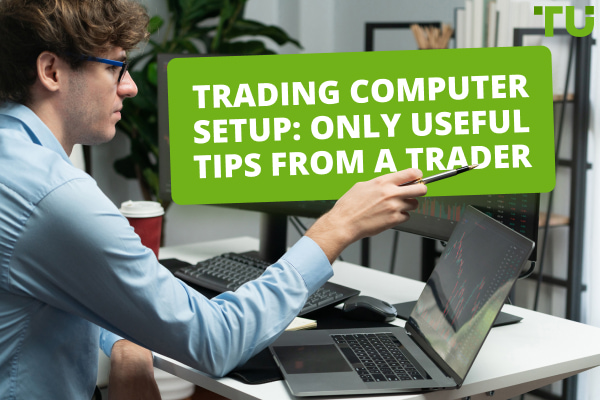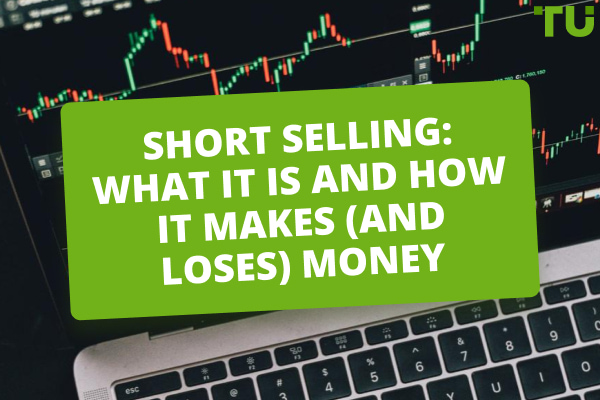What are Working Orders?
Working orders are a type of order that allows traders to specify the price and time conditions for entering or exiting a trade. They help traders execute their trading strategies more effectively, reduce the need for constant market monitoring, and improve risk management.
Working orders are a kind of trading order that are not filled right away at the prevailing market price, but instead wait on the order book for a specific price or time criterion to be met. These orders enable traders to execute trades at their preferred price points, or to end trades automatically when they reach a predetermined profit or loss target.
Working orders offer the flexibility to create more sophisticated trading strategies by mixing them with other types of orders. Working orders are also known as pending orders, and they include stop and limit orders to open. Working orders can have different expiry dates, from same-day to good 'til canceled, which will remain open until the trader cancels it or the condition is satisfied. Working orders are useful for traders who want to trade at optimal prices without having to constantly monitor the market.
Benefits of using working orders
Listed below are some of the benefits of using working orders.
Working orders can vary based on the requirements of the trader. Traders can choose different types of working orders, such as stop and limit orders, to suit trading objectives and risk appetite. Traders can also set different expiry dates, from same-day to good 'til canceled, for their working orders.
Working orders can help increase profitability by allowing traders to trade at optimal prices without having to constantly monitor the market. These orders can be used to enter the market when an asset reaches a specific price, or to exit the market when a certain profit or loss is reached. This way, traders can avoid missing trading opportunities or losing money due to market fluctuations.
Working orders can also help manage risk and reward ratios by enabling traders to set stop-loss and take-profit levels in advance. This way, traders control potential losses and profits according to a preferred trading strategy and risk tolerance. Working orders can also be used to protect existing positions from adverse market movements or to lock in profits.
These types of orders can also optimize trading performance and efficiency by reducing the emotional and psychological stress of trading, as well as the time and effort required to place and monitor trades manually. Traders can rely on working orders to execute trades automatically and accurately, without being influenced by fear, greed, or fatigue.
Best Forex brokers in 2024


Difference between working orders and market orders
Market orders and working orders are two types of trading orders that have different advantages and disadvantages for traders.
A market order is an instruction to buy or sell an asset as soon as possible at the best available price in the market. Such an order is suitable for traders who want to enter or exit a trade quickly and do not mind paying the current market price. A market order is guaranteed to be filled, but the downside is that it may incur slippage and market impact, especially in illiquid or volatile markets. Slippage is the difference between the expected price and the actual price of the trade, and market impact is the change in the price of the asset caused by the trade. Both slippage and market impact can reduce the profitability of the trade.
In contrast, a working order is an instruction to buy or sell an asset only when a certain price or time condition is satisfied. A working order is suitable for traders who want to enter or exit a trade at a specific price level and care more about the execution price than the speed of execution. A working order is not guaranteed to be filled, but the upside is that it may offer better execution prices and lower slippage and market impact, especially in liquid or stable markets. These types of orders help traders take advantage of price movements and to manage their risk and reward ratio.
Working orders: liquidity makers and liquidity takers
Liquidity is a measure of how easily and quickly an asset can be bought or sold in the market without causing significant changes in its price. Liquidity is important for traders and investors, as it affects the availability and cost of trading opportunities. Liquidity is influenced by the supply and demand of the asset, as well as the trading activity and behavior of the market participants.
Liquidity makers and takers are two types of market participants that have different impacts on the liquidity of the market.
For example, liquidity makers are traders who place working orders, such as limit orders, that are not immediately executed at the current market price, but are added to the order book until they are triggered by a certain price or time condition. They provide liquidity to the market by creating buy and sell orders that can be matched by other traders. Liquidity makers usually trade more passively and patiently, waiting for their preferred price levels to be reached. They often receive lower fees or rebates from exchanges for providing liquidity, as they make the market more attractive and efficient for other traders.
Liquidity takers, on the other hand, comprise traders who place market orders, which are executed immediately at the best available price in the market. Liquidity takers take liquidity from the market by matching with the existing working orders on the order book. Liquidity takers usually trade more actively and aggressively, seeking instant execution of their trades. They often pay higher fees or commissions to exchanges for taking liquidity, as they consume the liquidity provided by other traders.
Liquidity makers and takers have different advantages and disadvantages, depending on their trading objectives and strategies. Liquidity makers can trade at their desired prices and lower their trading costs, but they may face the risk of not being filled or missing out on market movements. Liquidity takers can trade quickly and avoid missing out on market movements, but they may face the risk of paying unfavorable prices and higher trading costs.
Different types of working orders
There are several types of working orders that traders can use to enhance their trading efficiency and profitability. Below, several of the more common working orders are described.
A limit order is an order to buy or sell an asset at a specified price or better. A buy limit order can only be executed at the limit price or lower, while a sell limit order can only be executed at the limit price or higher. Limit orders can help traders enter or exit a trade at their preferred price level, but they may not be filled if the market does not reach the limit price.
A stop order is an order to buy or sell an asset when it reaches a specified price, known as the stop price. A buy stop order can only be executed at the stop price or higher, while a sell stop order can only be executed at the stop price or lower. Stop orders can help traders to protect their positions from adverse price movements, or to enter a trade in the direction of a breakout.
A one-cancels-the-other (OCO) is a pair of working orders that are linked together, such that if one order is executed, the other order is automatically canceled. An OCO order often combines a limit order and a stop order on opposite sides of the current market price. OCO orders can help traders to capture profits or limit losses in volatile markets, without having to monitor both orders separately.
A take profit (TP) is an order to close an existing position at a specified profit level. A TP order is usually placed above the current market price for a long position, or below the current market price for a short position. TP orders can help traders to lock in their profits when the market reaches their target level, without having to manually close their positions.
A stop loss (SL) is an order to close an existing position at a specified loss level. An SL order is usually placed below the current market price for a long position, or above the current market price for a short position. SL orders can help traders to limit their losses when the market moves against them, without having to manually close their positions.
Conclusion
Working orders are powerful tools that help traders enhance their trading efficiency and profitability. By using working orders, traders specify the price and time conditions for entering or exiting a trade, reduce the need for constant market monitoring, and improve their risk management. Working orders also can be combined with other orders to create more complex trading scenarios. Traders should understand the different types of working orders and how they work, and choose the ones that suit their trading objectives and strategies.
Glossary for novice traders
-
1
Broker
A broker is a legal entity or individual that performs as an intermediary when making trades in the financial markets. Private investors cannot trade without a broker, since only brokers can execute trades on the exchanges.
-
2
Trading
Trading involves the act of buying and selling financial assets like stocks, currencies, or commodities with the intention of profiting from market price fluctuations. Traders employ various strategies, analysis techniques, and risk management practices to make informed decisions and optimize their chances of success in the financial markets.
-
3
Limit order
A limit order is a type of order used in trading where an investor specifies a particular price at which they want to buy or sell a financial asset. The order will only be executed if the market price reaches or exceeds the specified limit price, ensuring that the trader gets the desired price or better when the trade is executed.
-
4
Risk Management
Risk management is a risk management model that involves controlling potential losses while maximizing profits. The main risk management tools are stop loss, take profit, calculation of position volume taking into account leverage and pip value.
-
5
Investor
An investor is an individual, who invests money in an asset with the expectation that its value would appreciate in the future. The asset can be anything, including a bond, debenture, mutual fund, equity, gold, silver, exchange-traded funds (ETFs), and real-estate property.
Team that worked on the article
Thomas Wettermann is an experienced writer and a contributor to the Traders Union website. Over the last 30 years, he has written posts, articles, tutorials, and publications on several different high tech, health, and financial technologies, including FinTech, Forex trading, cryptocurrencies, metaverses, blockchain, NFTs and more. He is also an active Discord and Crypto Twitter user and content producer.
Dr. BJ Johnson is a PhD in English Language and an editor with over 15 years of experience. He earned his degree in English Language in the U.S and the UK. In 2020, Dr. Johnson joined the Traders Union team. Since then, he has created over 100 exclusive articles and edited over 300 articles of other authors.
Tobi Opeyemi Amure is an editor and expert writer with over 7 years of experience. In 2023, Tobi joined the Traders Union team as an editor and fact checker, making sure to deliver trustworthy and reliable content. The topics he covers include trading signals, cryptocurrencies, Forex brokers, stock brokers, expert advisors, binary options.
Tobi Opeyemi Amure motto: The journey of a thousand miles begins with a single step.









